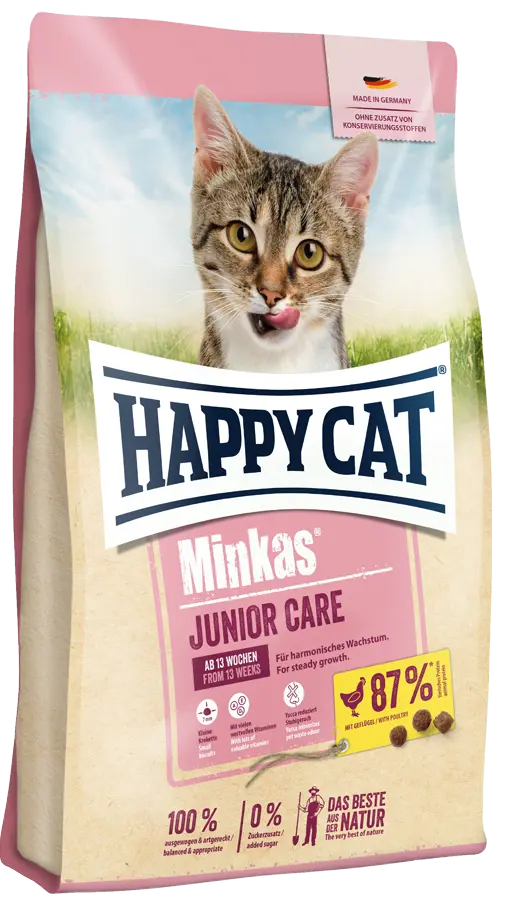Happy Cat Minkas
Junior Care Poultry
Kitten
Regular
Indoor and Outdoor
Click to reveal the score breakdown
Tap to view ingredients, guaranteed analysis and more
Ingredients
Poultry protein (partly hydrolysed, 33%)
Poultry fat
Potato flakes
Corn
Corn flour
Wheat
Meat meal
Fish meal
Beet pulp (desugared)
Lignocellulose
and also:
Sunflower oil, Apple pomace,, Sodium chloride, Rapeseed oil, Yucca schidigera (0.04%)
Vitamins and Additives
Vitamin A 15000 IU
Vitamin D3 1250 IU
and also:
Vitamin E (all-rac-alpha-tocopheryl acetate) (75mg), Taurine (1000mg), Trace elements/kg: Iron (iron(II) sulphate; monohydrate) (130mg), Copper (copper(II) sulphate pentahydrate) (12mg), Zinc (zinc oxide) (100mg), Manganese (manganese(II) oxide) (15mg), Iodine (calcium iodate; anhydrous) (1.5mg), Selenium (sodium selenite) (0.15mg), Amino acids/kg: DL methionine (4500mg), Antioxidanst: tocopherol-rich extracts from plant oils.
Comments
Minkas Junior Care Poultry
Guaranteed Analysis
Crude Protein
32%
Crude Fat
18%
Crude Fiber
2.5%
Moisture
8%
Crude Ash
7%
Calcium
1.45%
Phosphorus
0.85%
Potassium
0.5%
Magnesium
0.1%
Omega 3
0.25%
Omega 6
3%
Comments
Minkas Junior Care Poultry
Product last updated: February 5, 2024, 8:43 AM
Please hold on while we’re getting the best offers for you
6715






